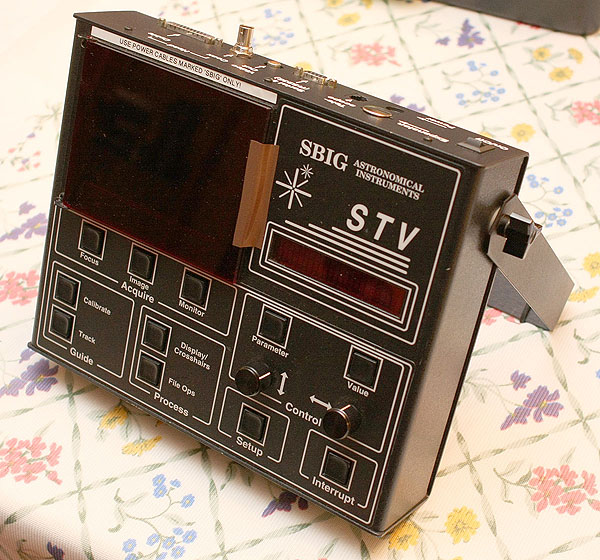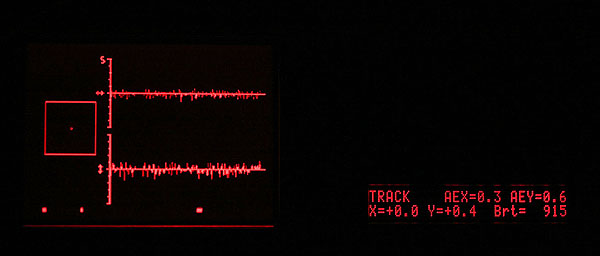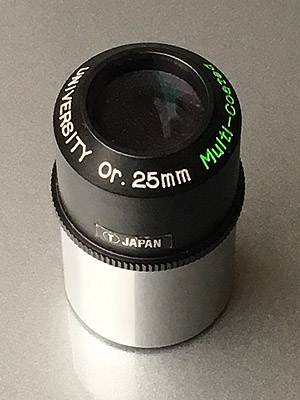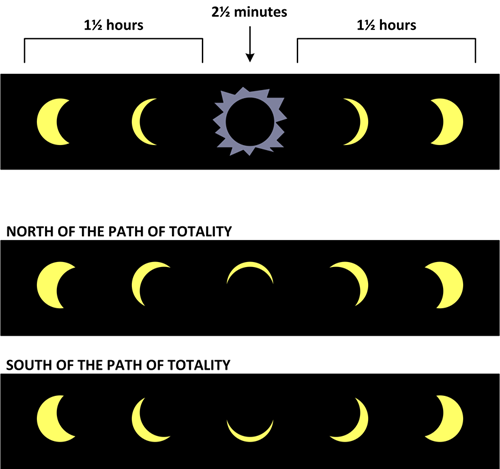 |
|
 |
| |
|
| |
The ads that you see here are not controlled or endorsed by Covington Innovations.
They come from Google based on your browsing history.
If offensive ads appear, click on the triangle at the upper right and choose "AdChoices," or turn off cookies in your browser. |
|
|
|
2017
June
27-30
|
Charles Babbage's memoirs
Probably many of us have formed the impression that Mark Twain was a
man from the 1950s who somehow happened to live in the 1880s.
Well, I've come across a similar case.
The mathematician Charles Babbage, who invented the first programmable
computer, strikes me as a 1980s character living in the 1820s,
very well settled in and at home there, but moving with an efficiency
and precision that belong to a much later era.
I've enjoyed reading Babbage's memoir,
Passages from the Life of a Philosopher.
This is a book to skim rather than read solidly through because different
parts of it are quite different; parts are technical and parts are whimsical.
Besides inventing a computer (which was never finished), Babbage invented a lot
of other things: the cowcatcher and other pieces of railroad hardware,
the chart recorder (which started life as a device to record the shaking of
a railway carriage), Parcel Post (from the observation that the Post Office would be more
trusted than other package carriers), and so on.
He was the first person to understand the economics of industry, and particularly
division of labor — if work can be divided among a large team, only the most
exacting parts of it require a highly skilled worker, so ten men can indeed do the work
for much less than ten times the cost of one man who could do it.
He spent a lot of time bridging the social-class barrier between mathematicians
such as himself and mechanics who could actually build things; he enjoyed "blending in"
with groups of workmen and passing himself off as a mechanic (he was a very good one).
He tells funny stories. While traveling in France with is friend Sir John Herschel,
he stopped at a restaurant for breakfast, and both of them ordered eggs, cooked specific
ways, chacun deux (two each). The waiter misunderstood that as cinquante-deux
'fifty-two' until Herschel ran off into the kitchen to set him straight.
Part two of the story is that rumor volavit and
soon afterward, in Paris, they heard a story that two
Englishmen had ordered a breakfast of fifty-two eggs and eaten every one.
Babbage only remarked that young Englishmen might do anything.
On theology he had two points to make. The first, a very good one, is his answer to Hume's
objection to miracles. It is basically this: You can only call a miracle a violation of the
laws of nature if you know the laws of nature completely. How do you know that laws of
nature don't have special cases and other provisions that you haven't discovered?
His second point was skepticism about the Trinity and particularly the Athanasian Creed,
which he thinks was written as a deliberate parody. I don't find the Trinity as hard to believe in
as Babbage did; contra Babbage, the Trinity does not contradict arithmetic unless
you confound discourse referents with predicates. (My college teacher William Power once
wrote a paper applying predicate logic to the Trinity and making essentially this point.)
But I'll admit that the Athanasian Creed (which is definitely not by St. Athanasius)
almost seems
designed to make the whole thing look harder than it is.
Permanent link to this entry


|
2017
June
24-26
|
Farewell, autoguider


I have several astronomy-related items
for sale on eBay
right now.
One of them is my vintage 2001
SBIG STV Deluxe autoguider
(click to see its instruction manual).
It will definitely sell, but I don't know to whom, since bids are still
being taken. (Want a vintage autoguider? It can be yours!)
What, pray tell, is an autoguider?
Well, as you know, in order to take a long-exposure photograph of the stars, the
telescope has to track their apparent motion caused by the rotation of the earth.
For this purpose, it has motors, and a mount with an axis parallel to the axis of the earth.
But the mount and motors aren't perfect.
Errors in lining up the axis, imperfections in the gears, and slight flexure of the
mount and the telescope prevent it from tracking the stars perfectly.
There are two cures for this. One, new for the digital era, is to make relatively short
exposures (one minute or less) and combine them in the computer. For one minute the motors
usually work well enough. Occasional glitches can be eliminated by just discarding exposures
that didn't come out right.
The older cure is to guide — that is, to watch a star through a second telescope
mounted alongside the first one, and either manually keep it centered on crosshairs, or let
a machine do it for you. That machine is the autoguider; it consists of a small video camera
and a computer to interpret what it sees.
I've switched to using a laptop, with suitable software, as my autoguider. The complete setup
is less expensive, the camera is lighter in weight (important for preventing flexure),
and I have more control over the guiding algorithm (indeed, I can test rival pieces of
software against each other).
But the STV will serve someone well. It is especially suitable for a larger telescope
with an older mount whose guiding is controlled by relays rather than computer commands.
But I'll miss the sounds. So far, in my experience, PC-based autoguiding is a silent
endeavor. The STV beeps every time it makes a guiding correction. Its regular "pip, pip, pip"
enabled me to monitor the quality of the guiding while looking through a different telescope or
binoculars. I may push for the PC-based software to have sound as an option.
Permanent link to this entry
Policy statement: I do not argue about eclipse safety
I'll gladly tell you
what
the experts say
about how to observe an eclipse safely,
and why it's not safe to look at the sun without a proper filter.
But I'm not available to argue with you.
I know some people have gotten away with doing things that are considered dangerous.
That doesn't mean you will, or even that you know precisely how they got away with it.
The story may have changed in the telling.
More importantly, you don't get to make up your own reality.
Scientific facts don't care whether you believe them.
The photons coming from the sun don't care whether you know
how to take proper precautions.
And arguing is not my hobby, nor my job.
Permanent link to this entry


|
2017
June
19-23
|
My youth is over...
My youth is over — I've finally lost my last baby tooth.
Two of my primary teeth decided to stay for an extra half century, so instead of losing
them in childhood, I lost one of them a few months ago, and the other one this past Wednesday,
both in the dentist's chair (I didn't want to wait for them to come out at random times).
The reason they stayed is that the permanent teeth to replace them never showed up.
But they could easily have left me 40 years ago, and they didn't.
I'll eventually have implants to replace them. They were so much shorter than normal
teeth that I hardly miss them; I couldn't use them much for chewing, and they weren't
visible from the outside. So I don't look any different, and replacing them is
no hurry.
Permanent link to this entry
A movie I didn't like in my childhood, and still don't
Speaking of youth...
The first movie I ever saw, at age 4, back in 1961 or 1962, was Disney's
Babes in Toyland.
I didn't like it. The Forest of No Return scared me, and my father didn't make
me sit through any more of it; we went home.
A while back I saw a good bit of it on TV, and I also read the
plot summary
in Wikipedia.
My impression today? This movie is a mishmash. Is it trying to be a fairy tale,
a crime story, a horror movie, a statement about the Industrial Revolution, or what?
It seems to switch back and forth among all of these.
It is a remake of a 1903 operetta, a relic of a time when there was much less theater
for children, and I think Disney followed it too closely.
Instead of extracting a really good story line and reshaping the rest to fit it,
Disney Studios tried to preserve the whole thing, with some alterations but without
major structural change.
Permanent link to this entry


|
2017
June
15-18
|
Still more about the eclipse
I've updated my eclipse page to include
lots of goodies, including presentations and 1-page handouts in Spanish as well as English
and links to other useful sites. Enjoy!
Permanent link to this entry


|
2017
June
10-14
|
Still more philosophy of astrophotography
Continuing the discussion on Cloudy
Nights (the astronomy forum), another member, a gentleman whose nom de plume
is freestar8n, has expressed my point better than I could.
Here I'd like to paraphrase and expand on what he said.
People in the forum had been talking as if all "processing" of a digital image
made it scientifically invalid. That's not true. Some "processing" is standard,
and in most cases necessary in order to make the image viewable.
Standard processing includes calibration (with dark frames and flat frames) to
correct measured flaws in the sensor and optics, stacking (if multiple exposures
are being combined), setting black and white levels to make the image visible
(since we do not initially use the whole range of the sensor), and
(I would add) nonlinear contrast adjustment because pixel values in raw
images are proportional to number of photons, but pixel values on computer
screens and printers are proportional to perceived brightness, which is
related to number of photons by a power law.
All of these are systematic and treat all pixels alike. The output is a
straightforward mathematical function of the input.
Also, you can display the image at several stages of processing to show the
effect of each.
Adaptive algorithms and sharpening algorithms may cross the border into "retouching"
(of an automated sort), since they do not treat all pixels alike, but if done in
limited, standard
ways, they are generally acceptable.
The goal of all this is to show the celestial object as the camera recorded it.
"Let the object speak for itself."
An entirely different kind of processing, with extensive masking and manual retouching,
is done to create a picture from an
artist's vision, or to make a picture that is impressive,
as opposed to a documentary picture of an object that is impressive.
And that is what he and I don't care for — or at least,
we don't consider it straight astrophotography.
It has to be judged and justified by different criteria.
Permanent link to this entry


|
2017
June
8-9
|
More philosophy of astrophotography
The forum discussion about manipulated astrophotos ran on ad nauseam, and I've tried to clear it up by saying the following:
I think 4 different issues have gotten jumbled together.
(1) Realism vs. creative art: What does it mean for an astrophoto to be considered realistic? In other kinds of photography, we would say "it shows what the eye sees," but the point is, in astrophotography we are usually showing things the eye can't see. I think what we want to say is that a picture is realistic if it shows what the camera captured from the sky, with no manual insertion or removal of sky objects or their features. Algorithmic processing and false color are OK. If a picture is realistic, it need not have all the scientific value of the raw images, but it should show what was in the sky at the time.
If it's not realistic, it can still be a good picture, even an excellent one, but it has a different purpose.
(2) Taste: Do you like pictures better if they are realistic in the sense just defined? I strongly prefer them that way. But others prefer to create fantasy art (which I might like if it's really good). These are two different goals and different criteria for evaluation.
(3) Ethics in the sense of standard accepted practices: Some kinds of processing are so standard we feel little need to mention them; others, especially manual interventions, are things we would commonly expect the photographer to mention if publishing the image. I think the person who started the conversation had in mind things like whether the Hubble false-color palette is generally accepted. (It is.)
(4) Ethics in the sense of honesty: Clearly, people shouldn't make false statements or deliberately create false impressions that an image is "realistic" as defined above, if it isn't. For example, you don't claim to have photographed the ISS transiting Saturn if that's not what you did.
Permanent link to this entry


|
2017
June
7
|
Amateur and professional astronomy are pulling together
Something I said in an astronomy forum today:
We are emerging from a period (about 1970-2000) when amateur and professional astronomy were unusually far apart because of technological advances that only professionals could afford.
From its blossoming in the 1880s up through at least the 1960s, amateur astronomy contributed to professional research in a big way. Amateurs tracked the weather on Mars, Jupiter, and Saturn. Amateurs discovered comets and novae. Astronomical science relied on a big influx of amateur-contributed data. The ALPO, AAVSO, and BAA coordinated it (and still do).
Then, for a few decades, the pros could do things we couldn't help with. They started discovering all the comets, novae, and asteroids through automated surveys. They had the large telescopes necessary to photograph detail in galaxies. They had the equipment to compare images semi-automatically to detect changes. And so on.
Amateurs in the 1980s (including me) talked about taking the "esthetic path," observing and photographing the sky just for its beauty.
Those days are gone! Thanks largely to digital image sensors, but also improvements in telescopes and mounts, computers and software, and Internet information sources, amateurs are much closer to professional capabilities than they used to be. It's almost like Victorian times all over again — there's little to prevent amateurs from doing many of the observations professionals do. (I did photometry of a short-period variable star with my DSLR a while back. I could do it every night if I wanted to.) NASA actually consults amateurs about the processing of planetary images.
I think amateur and professional astronomy will continue to converge for many years to come. It's not 1980 any more.
Permanent link to this entry
A responsibility of astrophotographers and nature photographers
Something else I said in an astronomy forum today;
this was about the ethics of retouching pictures to add,
remove, or rearrange objects:
The Prime Directive is not to deceive the audience, which implies indicating clearly when a picture is not what it looks like.
The second thing to remember that we're not just making pretty pictures, we're photographing nature. Think about someone who photographs a bird in an unusual habitat. Ornithologists amateur and professional are going to take the picture at face value, as showing that the bird really was in that habitat, unless there's a clear indication that it wasn't. This might even happen 50 years from now, when the original photographer is long gone, and someone is researching the history of the bird's range.
The same goes for astronomy. You take a picture today and retouch a blotch out of it. Fifty years from now, someone is researching the pre-eruption visibility of a nova in that field. Yours is the only picture taken on that date that they can find. If you don't indicate clearly that it was retouched, it will mislead them.
Besides simple honesty, I feel a certain need to respect the universe as we are photographing it and not make it into something it's not, merely for the sake of "pretty pictures," unless they are clearly labeled as fantasy.
[Addendum:] A big difference between bird photography and astrophotography is that bird photography
has a solid tradition of editing out backgrounds, setting up stuffed specimens in realistic settings,
and the like, but astrophotography has a quite different sacred tradition — it has been our major way
of mapping the universe for decades. Accordingly, I maintain that there is an expectation of
integrity in astronomical images that does not pertain to other nature or landscape photography.
At the same time, if a bird photographer Photoshopped the wings of one species onto the body of
another, people would probably not admire the "pretty picture" but rather cry foul (fowl)!
Permanent link to this entry


|
2017
June
6
|
We'll miss University Optics
 I want to take a moment to thank J. W. Seyfried, whom I don't know personally,
for his service to astronomy in the United States.
I want to take a moment to thank J. W. Seyfried, whom I don't know personally,
for his service to astronomy in the United States.
Mr. Seyfried is the proprietor of University
Optics, of Ann Arbor, Michigan, and word has reached me
that he is retiring and closing the business after 55 years.
In the 1970s, University Optics was a full-range supplier of telescope parts.
Today the product line has narrowed somewhat, but the company's strong point is
still high-quality Japanese-made eyepieces at modest prices.
Their Abbe Orthoscopics are second to none, and they
have a number of wider-field designs — basically, somewhat older technology
but very well made and not too expensive.
Newer American designs don't give sharper images, just wider fields.
When I got my Criterion RV-6 in 1970, I quickly bought a University Optics 40-mm Kellner
eyepiece (for bright, low-power views), and, soon afterward, traded in my Criterion 12.5-mm
and 6-mm eyepieces for a 9-mm Orthoscopic for planetary work.
All their eyepieces in those days had the tapered "volcano top" design shown in the picture,
rather than the cylindrical housings that have come into vogue later.
Besides taking trade-ins (and listing secondhand eyepieces in their catalogue),
University Optics did another unusual thing — they filled orders immediately,
without waiting a week for the check to clear.
In the days before credit cards, most mail-order companies took some time to fill
orders.
Not University Optics — I was startled to receive things just 8 days after I ordered
them. That's in southern Georgia. I've heard that people in Ohio actually received
their merchandise the next day! Mr. Seyfried must have opened his mail first thing
in the morning, filled the orders immediately, and delivered them to UPS before the
day's shipments went out.
I'm ashamed to say I haven't bought much from University Optics in many years.
That's because I have a good collection of Tele Vue eyepieces.
But a few years ago, for old times' sake, I bought a 25-mm Orthoscopic from them,
which you see in the picture. It is excellent. In the old days, it wouldn't have
had the word "UNIVERSITY" on it in white, nor "Multi-Coated" in green, nor would it have
been multi-coated.
As of now, UO is still in business. If you need some eyepieces, now's your chance.
Permanent link to this entry


|
2017
June
2-5
|
The August 21 solar eclipse

We have a total solar eclipse coming on August 21.
I've made a whole web page
for it, containing my PowerPoint presentation and a number of
useful links. Enjoy!
Permanent link to this entry


|
2017
June
1
|
R Coronae Borealis, disappearing star?
On the evening of May 31 I got out my telescope and decided to do some visual
observing. I looked at the list of objects in
a book I wrote a while back, and one of them
surprised me.
The star R Coronae Borealis was about 2 magnitudes dimmer than it ought to be,
and it looked dull-colored.
Before going further I need to explain that the brightness of stars is measured
in magnitudes, a logarithmic scale that goes back to ancient times,
using higher numbers for fainter stars. The stars you see in the sky, in town,
are about magnitudes 0 to 4. Out in the country, you can also see stars of
magnitude 5 and 6. With my telescope, I can see down to magnitude 12, and photograph
down to 17 or further.
In 2001 I wrote that R Coronae Borealis was normally magnitude 6 but occasionally
faded to magnitude 14 or so. Essentially, it disappeared, except that a powerful
telescope would show that it was still there, much fainter.
Well, I found it at magnitude 8 last night and thought maybe I had caught another
of these fading episodes starting. So I went to the
American Association of Variable Star Observers
and looked up data. Here's what I got:

That is a graph of the magnitude of R Coronae Borealis since the end of 2003.
(The date is shown as a day number, since years and months mean nothing to the
stars.) Clearly, since late 2006 or so, this star hasn't been what it used to be!
What happened? Spectroscopic analysis shows that R Coronae Borealis has been
emitting a lot of carbon, which is now blocking much of its light.
Things like this are not rare. Many stars vary in brightness. This one happens
to be particularly irregular.
By the way, this is not Tabby's Star.
I'll write about that star another time.
Permanent link to this entry


|
|
|
This is a private web page,
not hosted or sponsored by the University of Georgia.
Copyright 2017 Michael A. Covington.
Caching by search engines is permitted.
To go to the latest entry every day, bookmark
http://www.covingtoninnovations.com/michael/blog/Default.asp
and if you get the previous month, tell your browser to refresh.
Portrait at top of page by Krystina Francis.
Entries are most often uploaded around 0000 UT on the date given, which is the previous
evening in the United States. When I'm busy, entries are generally shorter and are
uploaded as much as a whole day in advance.
Minor corrections are often uploaded the following day. If you see a minor error,
please look again a day later to see if it has been corrected.
In compliance with U.S. FTC guidelines,
I am glad to point out that unless explicitly
indicated, I do not receive substantial payments, free merchandise, or other remuneration
for reviewing or mentioning products on this web site.
Any remuneration valued at more than about $10 will always be mentioned here,
and in any case my writing about products and dealers is always truthful.
Reviewed
products are usually things I purchased for my own use, or occasionally items
lent to me briefly by manufacturers and described as such.
I am an Amazon Associate, and almost all of my links to Amazon.com pay me a commission
if you make a purchase. This of course does not determine which items I recommend, since
I can get a commission on anything they sell.
|
|






 I want to take a moment to thank J. W. Seyfried, whom I don't know personally,
for his service to astronomy in the United States.
I want to take a moment to thank J. W. Seyfried, whom I don't know personally,
for his service to astronomy in the United States.

